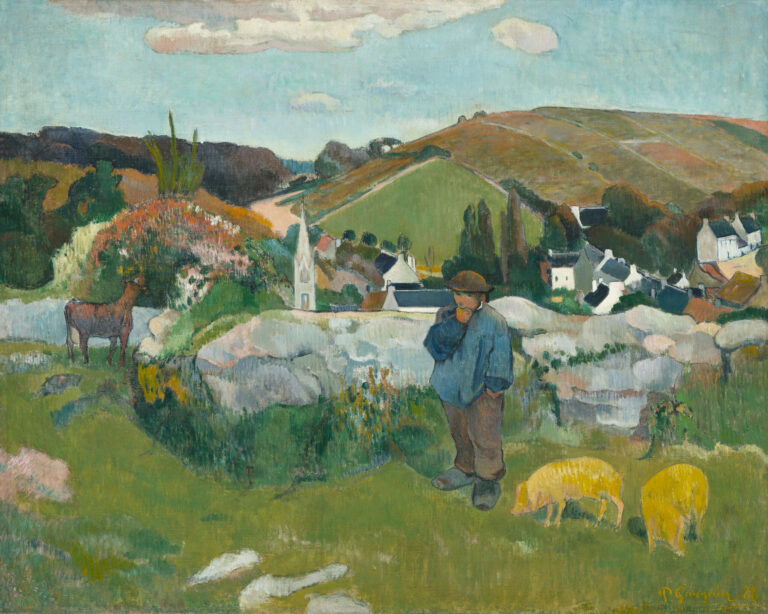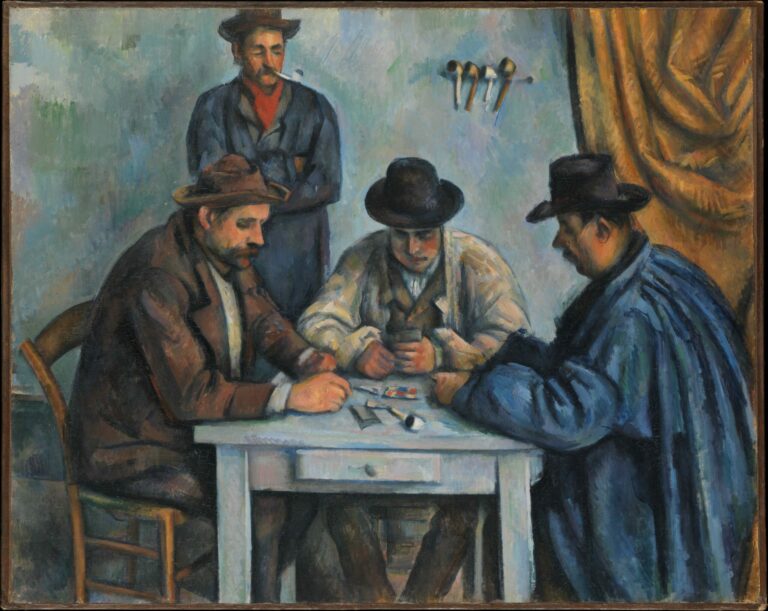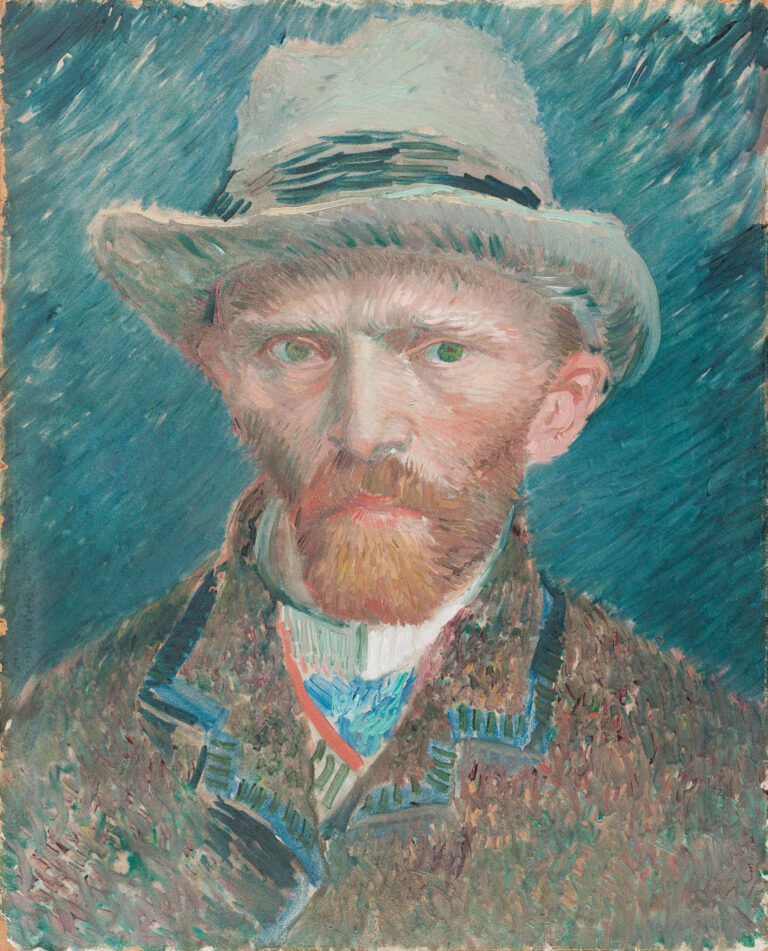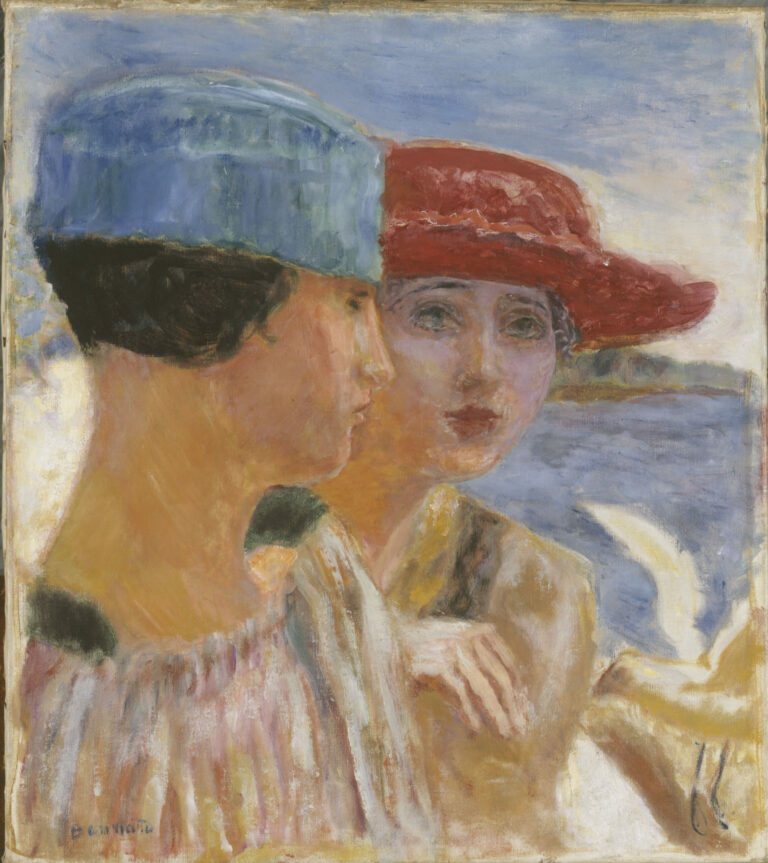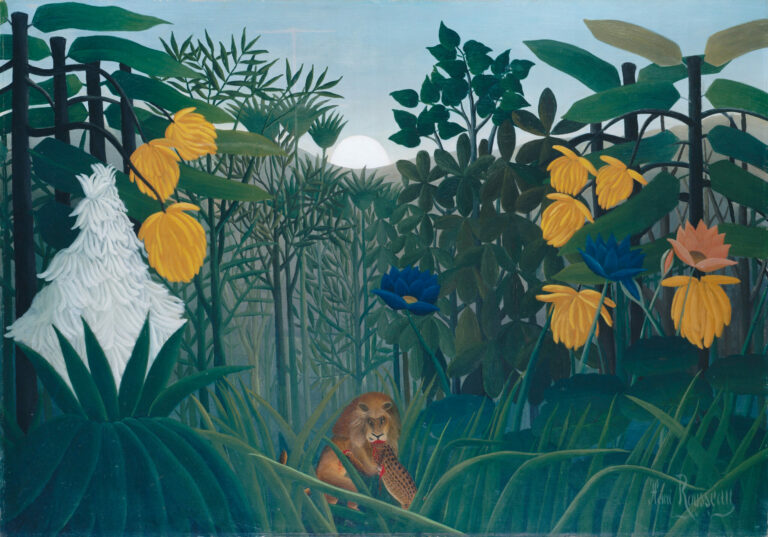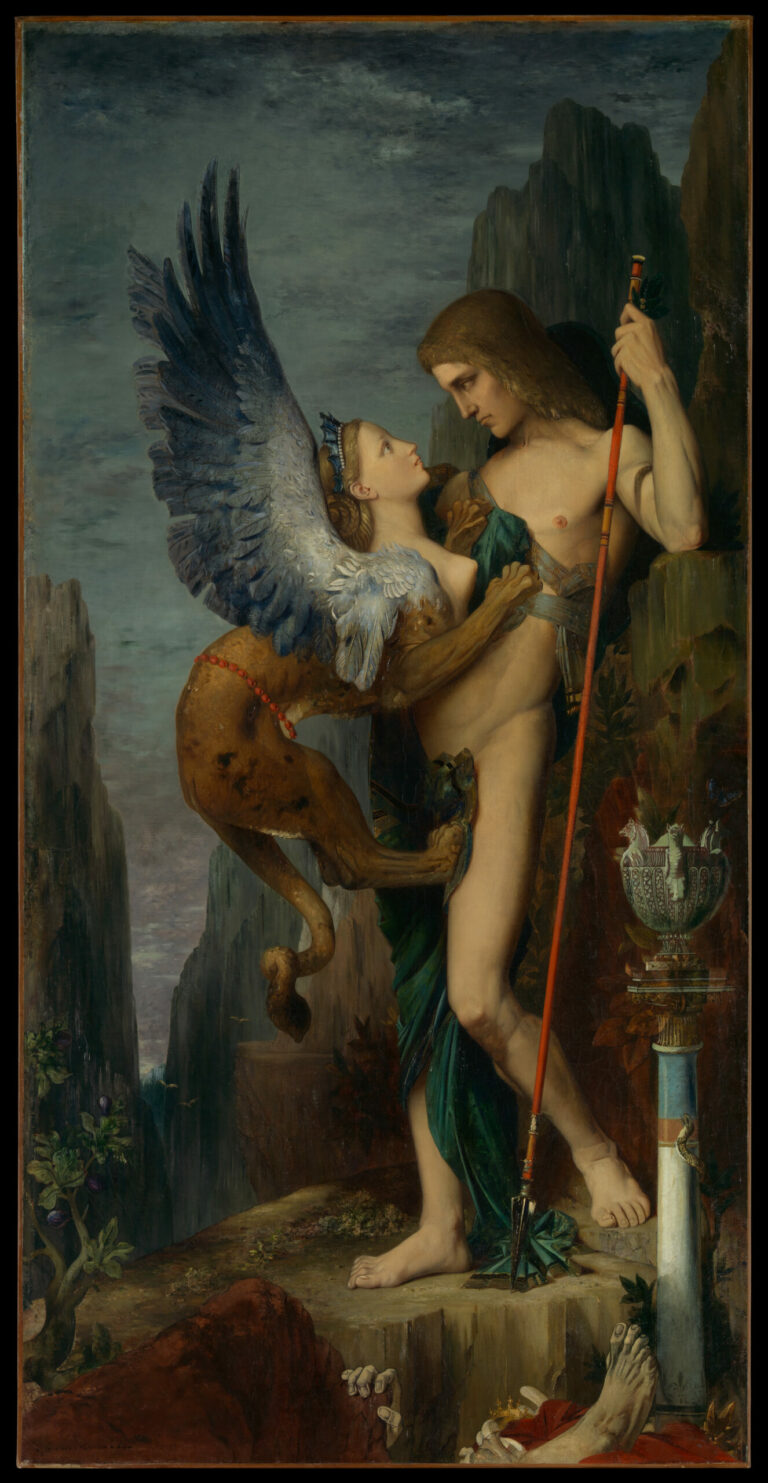
“First Steps, after Millet,” a touching work, reveals a lesser-known facet of Van Gogh’s creation: the art of pictorial “translation.”
Painted in January 1890 during his confinement at the Saint-Rémy asylum, it belongs to a series of twenty-one copies after Millet, an artist revered by Van Gogh. Working from a black and white photograph sent by his brother Theo, which he squared up and transferred to canvas, Van Gogh “improvised the color” in his own words. The pastoral scene is metamorphosed under his brush: the lush greens of the garden, the tender blues of the clothing, and the light create an unprecedented chromatic symphony. The artist’s characteristic touches—dynamic curves of foliage, rhythmic hatchings of the ground—transfigure Millet’s original into a personal vision. This free interpretation is comparable, according to Van Gogh, to that of a musical score.
Further information
- First Steps, after Millet, by Vincent van Gogh, 1890
- 72.4 x 91.1 cm (28 1/2 x 35 7/8 in.)
- The Metropolitan Museum of Art, Fifth Avenue, New York, displayed in Gallery 825
- https://www.metmuseum.org/art/collection/search/436526
Dutch Post-Impressionist painter, Vincent van Gogh (1853-1890) remains one of the most emblematic and tragic figures in Western art. A passionate autodidact, he painted only during the last ten years of his life, producing nearly 900 canvases and 1,100 drawings of striking expressive intensity. His unique style, characterized by vigorous impasto, pure colors, and expressive line, heralded modern art. Van Gogh developed a personal pictorial language nourished by diverse influences: Parisian Impressionism, Japanese prints, and especially Millet’s art, which he admired for its human truth. His stays in Provence marked the peak of his creation, before his premature death in Auvers-sur-Oise. His work, a moving testimony to an absolute spiritual and aesthetic quest, lastingly influenced Expressionism and contemporary art.

